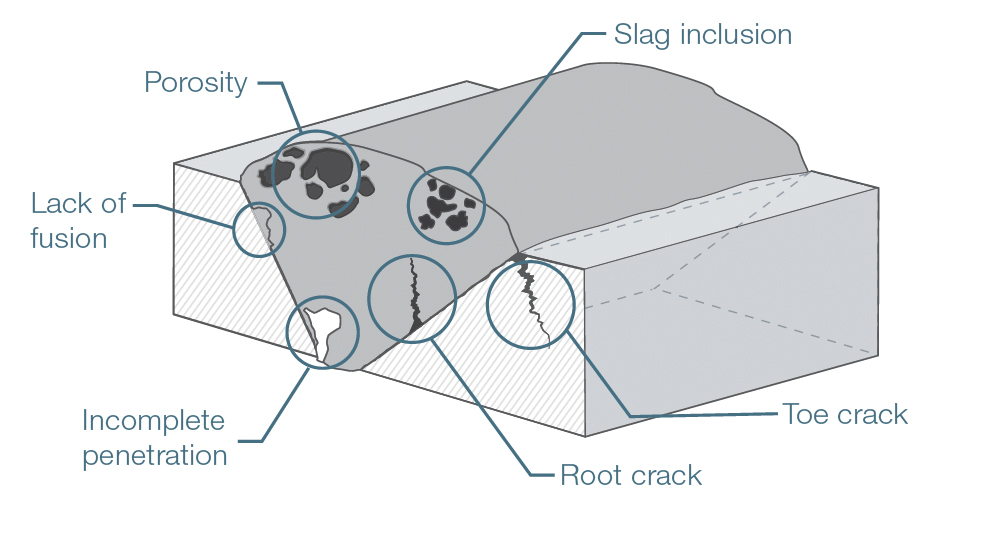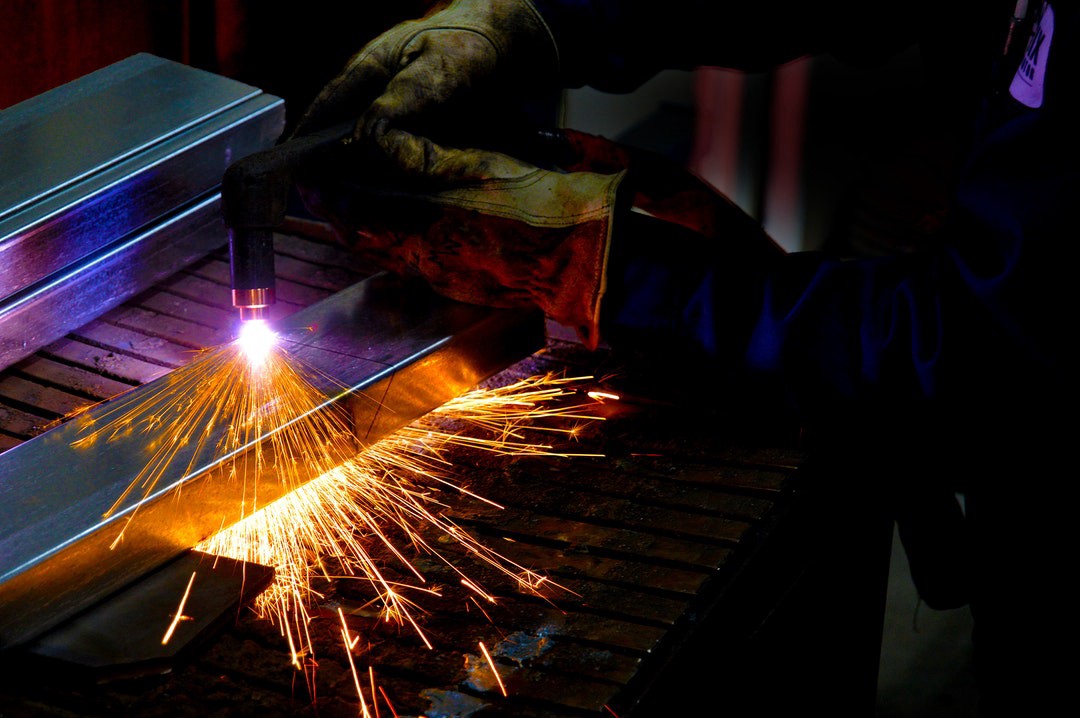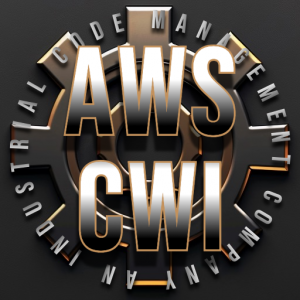How to Make Certain Quality with Welding Inspection Gilbert Arizona: Ideal Practices
Wiki Article
Discovering the Value of Welding Inspection in Industrial Applications: Guarding Against Failings and Enhancing Longevity
Welding assessment offers as a vital line of defense in commercial applications, guaranteeing the structural integrity and dependability of welded components. By systematically identifying problems such as porosity and incomplete fusion, assessments not only avoid failures but also expand the life-span of important possessions.Function of Welding Evaluation
Welding evaluation works as a crucial safeguard in industrial applications, making sure that welded frameworks meet defined criteria of high quality and security. This process involves an organized exam of welds to confirm their integrity, stamina, and conformity with well established codes and requirements. The function of welding evaluation is multifaceted, encompassing both aesthetic analyses and non-destructive screening techniques, which may consist of ultrasonic, radiographic, or magnetic bit testing.Reliable welding assessment identifies possible problems early, mitigating the threat of disastrous failures that can emerge from insufficient welds. By ensuring that welds are implemented according to develop specifications, assessors add to the total architectural reliability and durability of components in critical applications, such as stress vessels, pipelines, and architectural structures.

Usual Welding Problems

Among the most common problems is porosity, defined by tiny gas pockets entraped within the weld steel. This takes place because of pollutants or incorrect securing gas, endangering the weld's toughness. Another substantial problem is incomplete blend, where the weld steel stops working to bond appropriately with the base product, possibly leading to structural weak points.

Fractures can also create during or after the welding process, commonly associated to thermal tensions or improper air conditioning rates. In addition, undercutting, where the base metal is eroded along the weld grain, can deteriorate the joint and is typically brought on by too much heat input or wrong method.
Moreover, absence of penetration takes place when the weld metal does not get to the root of the joint, leading to insufficient strength. Recognizing these usual problems is crucial for inspectors and welders alike to make certain that welded frameworks fulfill security and efficiency requirements, inevitably avoiding possible failures in industrial applications.
Advantages of Regular Examinations
Routine examinations function as an essential protect in making sure the reliability and longevity of bonded structures. These analyses identify potential problems and weak points that might compromise the integrity of welds, permitting timely remediation before concerns rise. By implementing a structured assessment regimen, companies can substantially decrease the risk of disastrous failings that might bring about expensive downtime, devices replacement, and even crashes.
Moreover, regular evaluations add to boosted quality control throughout the welding process. By adhering to a regular assessment timetable, companies can make certain that their welding methods meet well established high quality standards and finest techniques. This not just fosters a society of liability but also motivates constant enhancement among welding workers.
Additionally, routine examinations promote far better upkeep planning. By identifying wear and tear early, companies can tactically arrange replacements and fixings, decreasing interruption to operations. This proactive strategy inevitably brings about extensive possession lifespan and improved overall productivity.
Finally, a commitment to routine inspections can improve a company's online reputation in the market. Clients and stakeholders increasingly value companies that prioritize safety and security and quality, consequently enhancing trust fund and potentially causing increased service opportunities.
Market Requirements and Regulations
Complying with industry requirements and regulations is a basic facet of welding evaluation that matches the advantages of regular evaluations. These requirements, developed by organizations such as the American Welding Society (AWS) and the American Culture of Mechanical Designers (ASME), provide a framework for finest techniques in welding processes, materials, and examination techniques. Compliance with these policies makes sure that welds fulfill the required quality and security standards, significantly minimizing the threat of structural failures.Regulative bodies like the Occupational Security and Health And Wellness Administration (OSHA) additionally apply standards that protect employees and the environment during welding operations. By following these established criteria, sectors can enhance the reliability of their parts and structures, guaranteeing they do as intended under various operational problems.
Moreover, adherence view it to industry standards promotes uniformity in quality control, promoting smoother communication amongst stakeholders and regulatory companies. This placement not only lessens obligation risks but also enhances the reliability of organizations in open markets. Welding Inspection Gilbert Arizona. Eventually, conformity with welding requirements and guidelines is not simply a legal responsibility; it is an essential investment in safety and security, efficiency, and lasting operational success
Future Trends in Welding Inspection
As sectors proceed to develop, the future of welding inspection is positioned to integrate advanced modern technologies that improve accuracy and performance. One of one of the most substantial fads is the adoption of automation and robotics in inspection procedures. Automated systems can this post conduct inspections quickly, decreasing human error and boosting throughput in making settings.Moreover, the combination of expert system (AI) and artificial intelligence algorithms will certainly check this site out allow anticipating analytics, permitting real-time analyses and proactive maintenance. By assessing data from previous examinations, these modern technologies can determine patterns that can suggest possible failures, thus expanding the lifespan of welded parts.
Additionally, non-destructive testing (NDT) techniques are expected to end up being extra sophisticated, using devices such as drones and independent lorries furnished with advanced sensors. Welding Inspection Gilbert Arizona. These advancements will improve the capability to evaluate hard-to-reach or hazardous locations without compromising safety
Moreover, the fad in the direction of digitalization will certainly lead to improved data management systems that help with far better monitoring, reporting, and conformity with sector criteria. In recap, the future of welding examination is characterized by technological advancements that promise to considerably enhance dependability, security, and operational efficiency in various industrial applications.
Conclusion
In verdict, welding assessment serves a vital feature in guaranteeing the honesty and sturdiness of bonded structures throughout various industrial applications. As advancements in modern technology continue to advance, the future of welding evaluation assures enhanced precision and efficiency, inevitably adding to the longevity of vital frameworks.Welding evaluation offers as a vital line of protection in industrial applications, making sure the structural honesty and dependability of bonded components.Welding assessment offers as a crucial secure in commercial applications, guaranteeing that bonded frameworks satisfy defined criteria of quality and security. Inevitably, the duty of welding inspection is vital in advertising safety, improving efficiency, and shielding investments in industrial facilities.
These requirements, developed by organizations such as the American Welding Society (AWS) and the American Culture of Mechanical Engineers (ASME), supply a framework for best methods in welding processes, products, and examination techniques.In conclusion, welding examination serves a crucial feature in ensuring the integrity and longevity of bonded frameworks throughout numerous industrial applications.
Report this wiki page